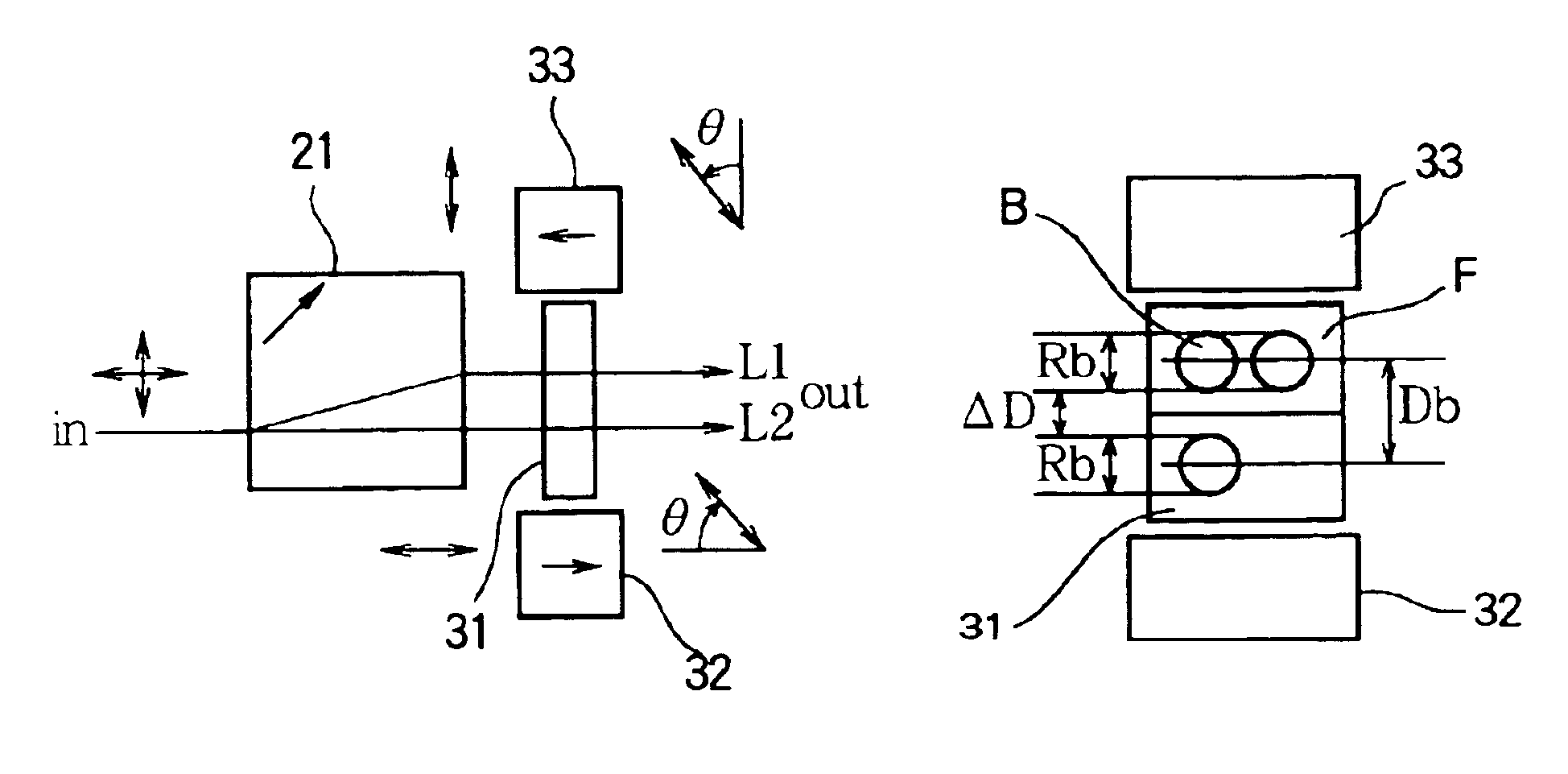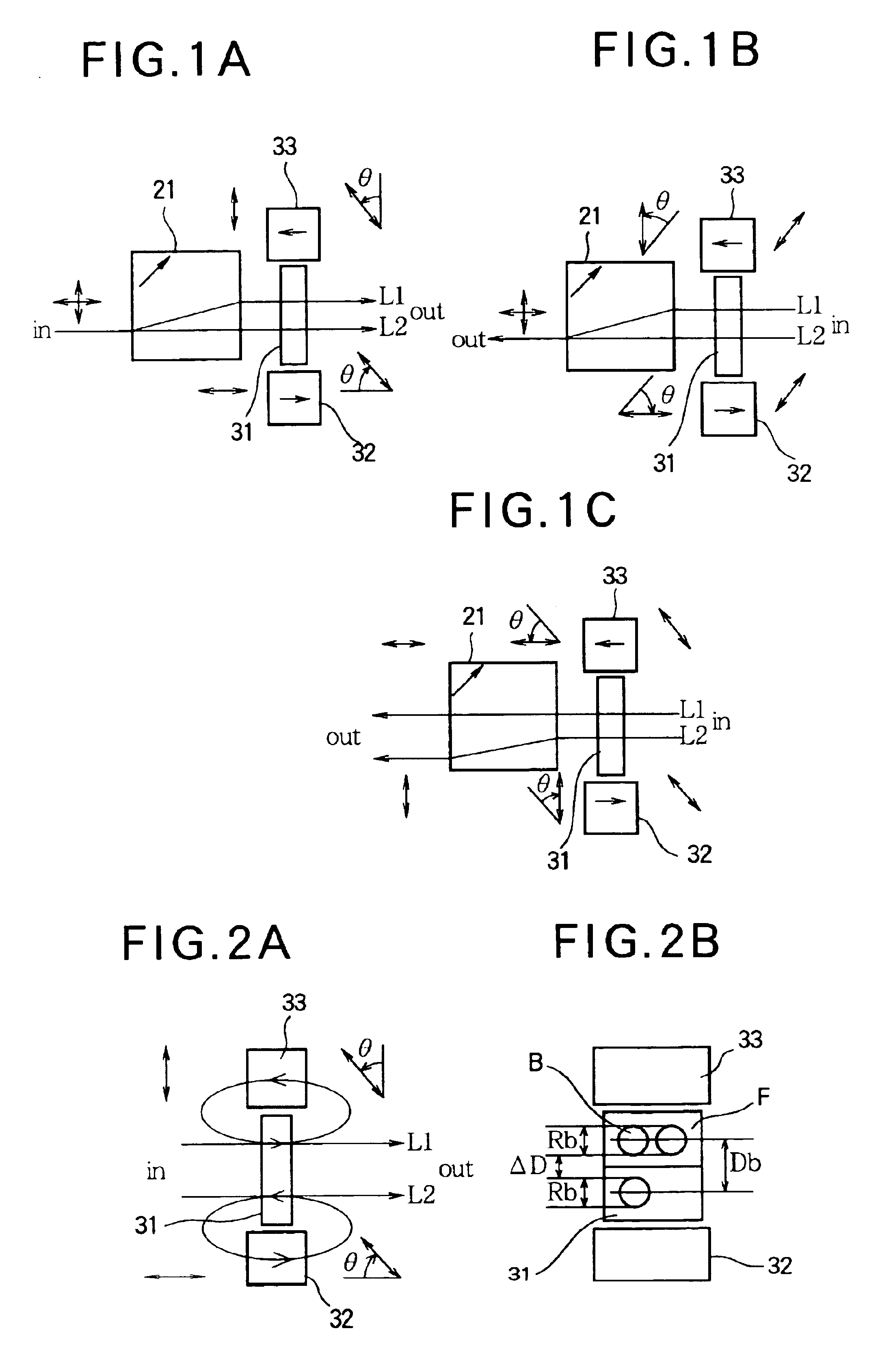Optical apparatus
a circulator and optical technology, applied in the field of optical circulators, can solve the problems of large size of individual optical components and therefore not economical, and place certain limitations on the miniaturization of optical circulators, and chip in the range of several microns to several tens microns at the cut surface and edge of wave plates
- Summary
- Abstract
- Description
- Claims
- Application Information
AI Technical Summary
Benefits of technology
Problems solved by technology
Method used
Image
Examples
Embodiment Construction
Embodiments of the invention will be described in detail by way of experimental results with reference to the drawings.
In this specification, the term multiple divided-domain Faraday rotator is used to cover a Faraday rotator that is made of a bismuth-substituted rare earth iron garnet single crystal film and is divided into multiple areas of a single domain structure when the Faraday rotator is in a plurality of external magnetic fields.
FIGS. 1A-1C illustrate the principle of operation of an optical apparatus that uses a Faraday rotator (referred to as a double divided-domain Faraday rotator) according to the invention.
The optical device according to the invention includes a Faraday rotator made of a bismuth substituted rare-earth iron garnet single crystal (BIG) 31 having a Faraday rotation of about 45 degrees, permanent magnets 32 and 33 arranged relative to the Faraday rotator, and a birefringent block 21. The magnetic fields of the permanent magnets 32 and 33 divide the Faraday...
PUM
| Property | Measurement | Unit |
|---|---|---|
| diameter | aaaaa | aaaaa |
| diameter | aaaaa | aaaaa |
| diameter | aaaaa | aaaaa |
Abstract
Description
Claims
Application Information
 Login to View More
Login to View More - R&D
- Intellectual Property
- Life Sciences
- Materials
- Tech Scout
- Unparalleled Data Quality
- Higher Quality Content
- 60% Fewer Hallucinations
Browse by: Latest US Patents, China's latest patents, Technical Efficacy Thesaurus, Application Domain, Technology Topic, Popular Technical Reports.
© 2025 PatSnap. All rights reserved.Legal|Privacy policy|Modern Slavery Act Transparency Statement|Sitemap|About US| Contact US: help@patsnap.com



